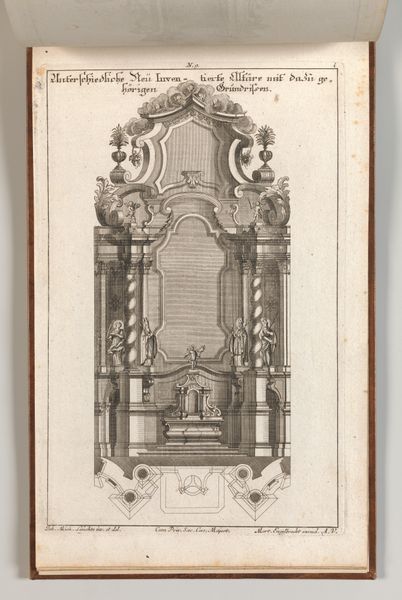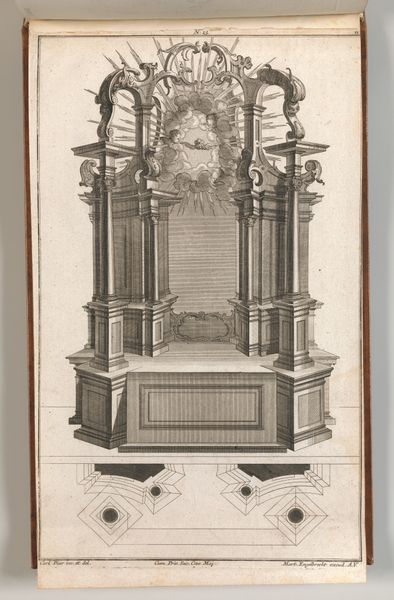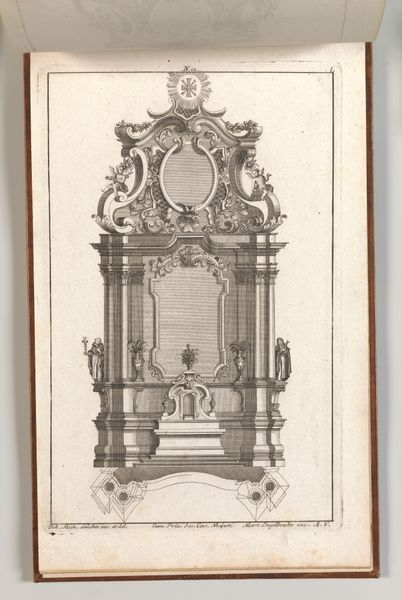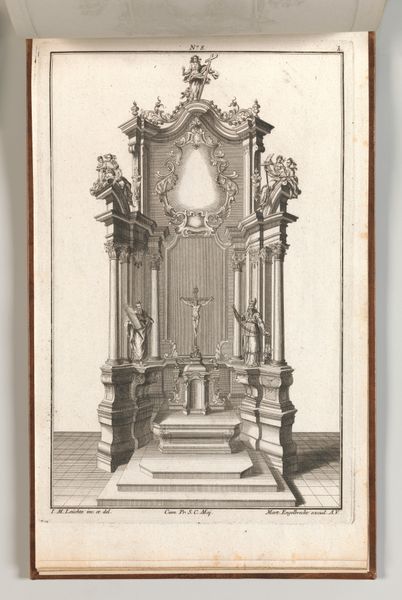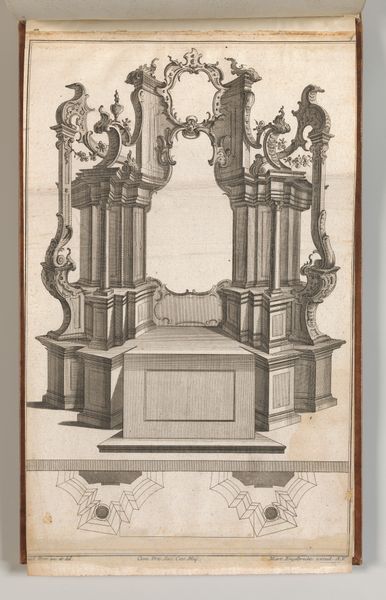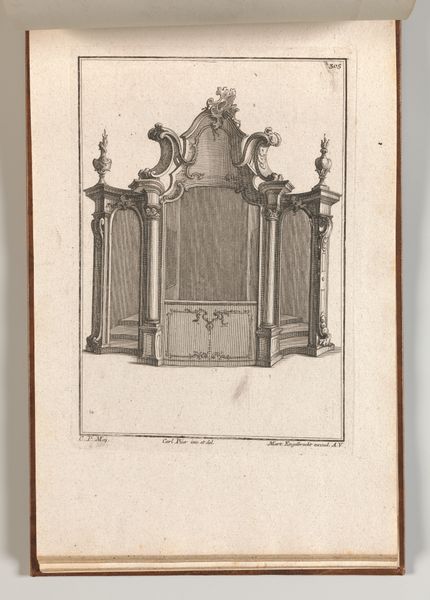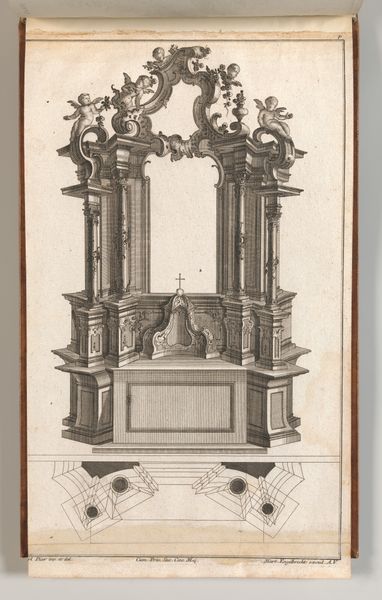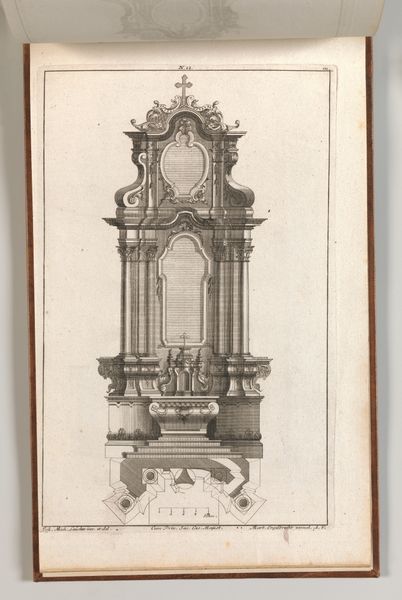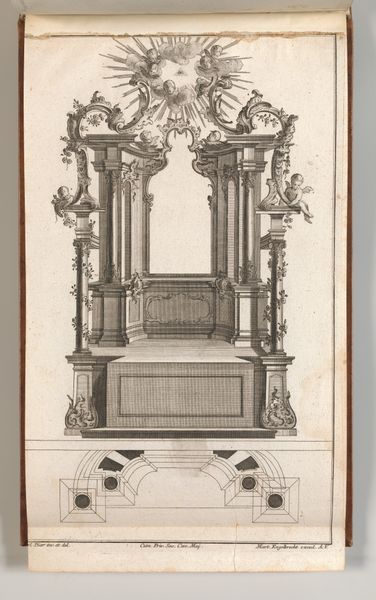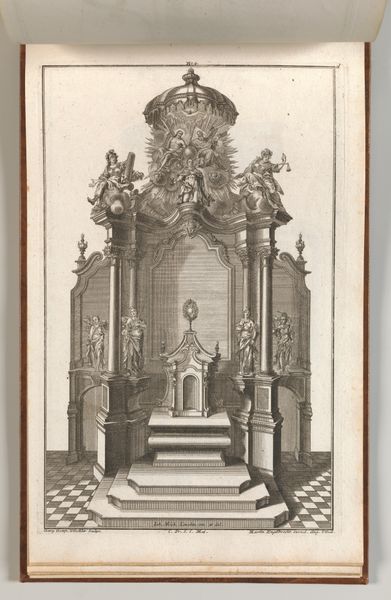
Design for a Monumental Altar, Plate k from 'Unterschiedliche Neu Inventierte Altäre mit darzu gehörigen Profillen u. Grundrißen.' 1745 - 1755
0:00
0:00
drawing, print, engraving, architecture
#
drawing
#
baroque
# print
#
geometric
#
decorative-art
#
engraving
#
architecture
Dimensions: Overall: 8 7/16 × 13 3/4 in. (21.5 × 35 cm)
Copyright: Public Domain
Martin Engelbrecht created this etching, “Design for a Monumental Altar,” in Germany, sometime in the first half of the 18th century. It comes from a series of newly invented altars, showcasing the period's ornate aesthetic. This design reflects the cultural and religious context of its time. Altars, as focal points in churches, were not merely functional; they were powerful symbols of faith and authority. The Baroque style, with its elaborate details and grandeur, served to inspire awe and reinforce the church's dominance in society. The design would have been shaped by the church's hierarchy and their desire to impress upon the population the power and glory of the divine. To understand this artwork, we can research the history of religious institutions in 18th-century Germany, the patronage system, and the social function of art. The meaning of art is contingent on its social and institutional context, and as historians, we can reveal its significance.
Comments
No comments
Be the first to comment and join the conversation on the ultimate creative platform.
